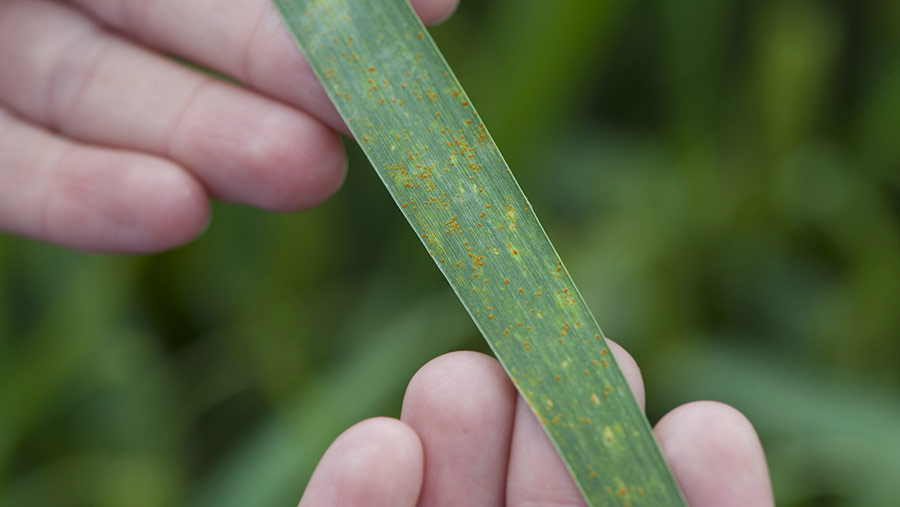Rampant brown rust ‘could be worst since 2007’
 © FLPA/REX/Shutterstock
© FLPA/REX/Shutterstock Concern over levels of brown rust reported in winter wheat crops is growing and the disease will require monitoring and early treatment in the worst cases.
The warmest December on record has resulted in some crops drowning in a soup of disease, with septoria, yellow rust and mildew all widespread – particularly in early-drilled fields.
The previous bad brown rust season of 2007 followed a December with temperatures 3C above the average, allowing the disease to infect leaves early.
However, last month was even warmer, with temperatures a balmy 4C above the average, which has again resulted in widespread brown rust infection in susceptible wheat varieties.
See also: Disease alert as yellow rust builds on wheat crops
Adas plant pathologist Jonathan Blake explained that the warmer temperatures have shortened the latent period and increased the infection’s efficiency, giving the disease a helping hand.
“It has been cycling faster and infecting the plant more effectively and although there is a long way to go [in the season], it will need to be watched closely,” he added.
Heavy infection
Hampshire-based AICC and CCC Agronomy crop consultant Peter Cowlrick often sees the disease in southern counties, but noted particularly high levels for this time of year.
He said the arrival of frost could help take out mildew, but will not have much effect on brown rust that is infecting up to four or five of the newest leaves in the worst cases.
“In any crops drilled before mid-October you can find brown rust readily, particularly in varieties such as Claire, Crusoe and Cordiale.
“It is widespread and aggressive. There are very high levels for this time of year and it reminds us of 2007,” he explains.
He also warned that a larger area of Group 1 wheat Crusoe this year could mean the disease is seen away from its typical south-eastern hotspot, as it has a lowly resistance score of just 3.
Early control
In 2007 AICC trials, Mr Cowlrick said a T0 application of a rust active provided a yield response of about 0.75t/ha in susceptible varieties and believes the benefit could be even greater this year.
However, in the worst cases of infection an earlier fungicide treatment may be required to reduce any negative effects on crop rooting and foliar growth.
“The short infection and latent period means most leaves will now be infected, which is a big physiological burden and the mildew will add to that too.”
In these situations, he said, a cheap and effective rust active azole such as tebuconazole sould be applied, costing in the region of £4-£5/ha, and would buy growers some time.
“It would then be wise to consider a strobilurin as part of your T0 spray,” he added.
Mr Blake reckoned that in most cases an earlier spray won’t be necessary, but robust, rust active sprays when the fungicide programme begins in the spring will help to keep a lid on the disease.
“Growers should look at a T0 azole or strobilurin – a strobilurin might be a better choice from an azole-resistance management point of view.
“A strobilurin at the T1 timing is also advisable, particularly if using prothioconazole. It has less activity on brown rust than other azoles, so may need supporting,” he added.
